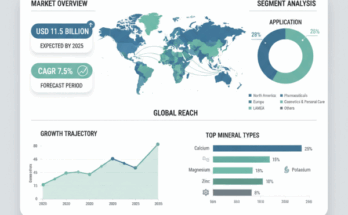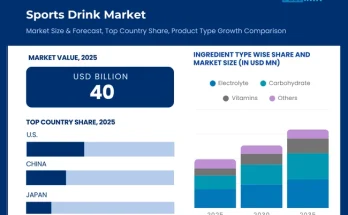The global designer fiber market is projected to grow from USD 1.2 billion in 2025 to approximately USD 1.95 billion by 2035, at a compound annual growth rate (CAGR) of about 5.0%.
Bioengineered Fibers & Apparel Demand Key Market Drivers:
Designer fibers represent advanced biomaterials developed through precision biotechnology, combining synthetic biology and fermentation to engineer high-performance fibers with properties exceeding conventional alternatives in strength, elasticity, and sustainability. Demand is rising from textile and apparel manufacturers, as well as industrial and medical applications where premium fiber properties are required.
From 2025 to 2030, the market is expected to grow from USD 1.2 B to USD 1.55 B, adding USD 350 M, which accounts for approximately 46.7% of the total ten-year growth. From 2030 to 2035, the market is forecast to further grow to USD 1.95 B, adding another USD 400 M (≈ 53.3% of growth for the decade).
- By Product Type: Bioengineered fibers (protein-based and hybrid synthetics) lead the market, representing ~45% of global value due to superior mechanical performance and sustainability credentials.
- By Application: Apparel dominates (~50% share in 2025), driven by premium activewear, performance fashion, and clean-label brand positioning. Other notable applications include industrial textiles, medical textiles, and specialty technical uses.
- By Source/Technology: Precision fermentation and recombinant protein production are expanding capacity and lowering costs; companies investing in scalable bioprocessing capture higher margins and market share.
- Key Demand Drivers: Sustainability mandates and consumer preference for ethically sourced materials; performance requirements (durability, moisture management, stretch/recovery); brand-driven premiumization in apparel; and partnerships between biotech startups and textile incumbents.
Five Forces Driving Market Growth
- Biotechnology & Innovation: Advances in precision fermentation, protein engineering, and scalable downstream processing reduce unit costs and broaden material properties, enabling new fiber formulations.
- Apparel Industry Premiumization: Fast-growing demand for high-performance, sustainable textiles from activewear and luxury brands drives adoption of designer fibers.
- Sustainability & Regulatory Pressure: Brand-level sustainability targets and regulatory focus on lifecycle impacts favor biodegradable or low-impact designer fibers over conventional petroleum-based alternatives.
- Strategic Collaborations & Scale-up: Partnerships between biotech firms and established textile manufacturers accelerate commercialization and reduce time-to-market for new fibers.
- Market Access & Consumer Awareness: Growing retail acceptance and consumer education about performance and sustainability increase willingness to pay premiums, improving revenue visibility for fiber producers.
To access the complete data tables and in-depth insights, request a sample report here: https://www.factmr.com/connectus/sample?flag=S&rep_id=8613
Regional & Country Highlights
- Asia Pacific, Europe, and North America are identified as key growth regions.
- India is forecast to be one of the fastest-growing markets with a CAGR of ~5.8% through 2035, driven by textile industry expansion and increasing apparel manufacturing.
- In Europe, Germany leads with about 25.6% share in 2025, rising to ~26.2% by 2035; the UK holds ~19.4% share in 2025, increasing to ~19.9%.
Competitive Landscape:
Prominent players profiled include: Spiber, Bolt Threads, AMSilk, Modern Meadow, Kraig Biocraft, DuPont, Evonik, Toray Industries, DSM, Teijin, Shiseido, Lenzing AG, Pangaia, and Kintra Fibers. They are focusing on advanced biotechnological manufacturing, expanding fermentation capacity, and strategic partnerships with textile and apparel firms to capture growing demand.
Market Outlook & Strategic Insights:
Over the forecast period, the designer fiber market is expected to shift toward higher-performance, custom engineered fiber solutions—particularly bioengineered protein-based or synthetic hybrid fibers tailored for apparel and medical uses. Manufacturers investing in advanced biotechnology, precision fermentation, and scalable fiber production are poised to benefit.
“Manufacturers focusing on high-performance, clean-label designer fiber innovations aligned with textile and apparel demand will capture the largest growth opportunities,” noted a Fact.MR analyst.
Key Market Insights at a Glance:
- Market Value (2025): USD 1.2 billion.
- Forecast Value (2035): USD 1.95 billion.
- CAGR (2025-2035): ~5.0%.
- Top Product Type: Bioengineered fibers (≈45% market share).
- Dominant Application: Apparel (≈50% share in 2025).
- Fastest-Growing Region: India / Asia Pacific (India ~5.8% CAGR).
Purchase Full Report for In-Depth Insights: https://www.factmr.com/checkout/8613
For more detailed regional breakdowns, fiber type & source analysis, company market share, and growth forecasts, access the full report: Designer Fiber Market Report (2025-2035).
About Fact.MR:
Fact.MR is a global market research and consulting organization providing data-driven insights, forecasts, and strategic intelligence across multiple industries. Trusted by leading companies worldwide, it helps clients make informed decisions through comprehensive market analysis and actionable recommendations.



